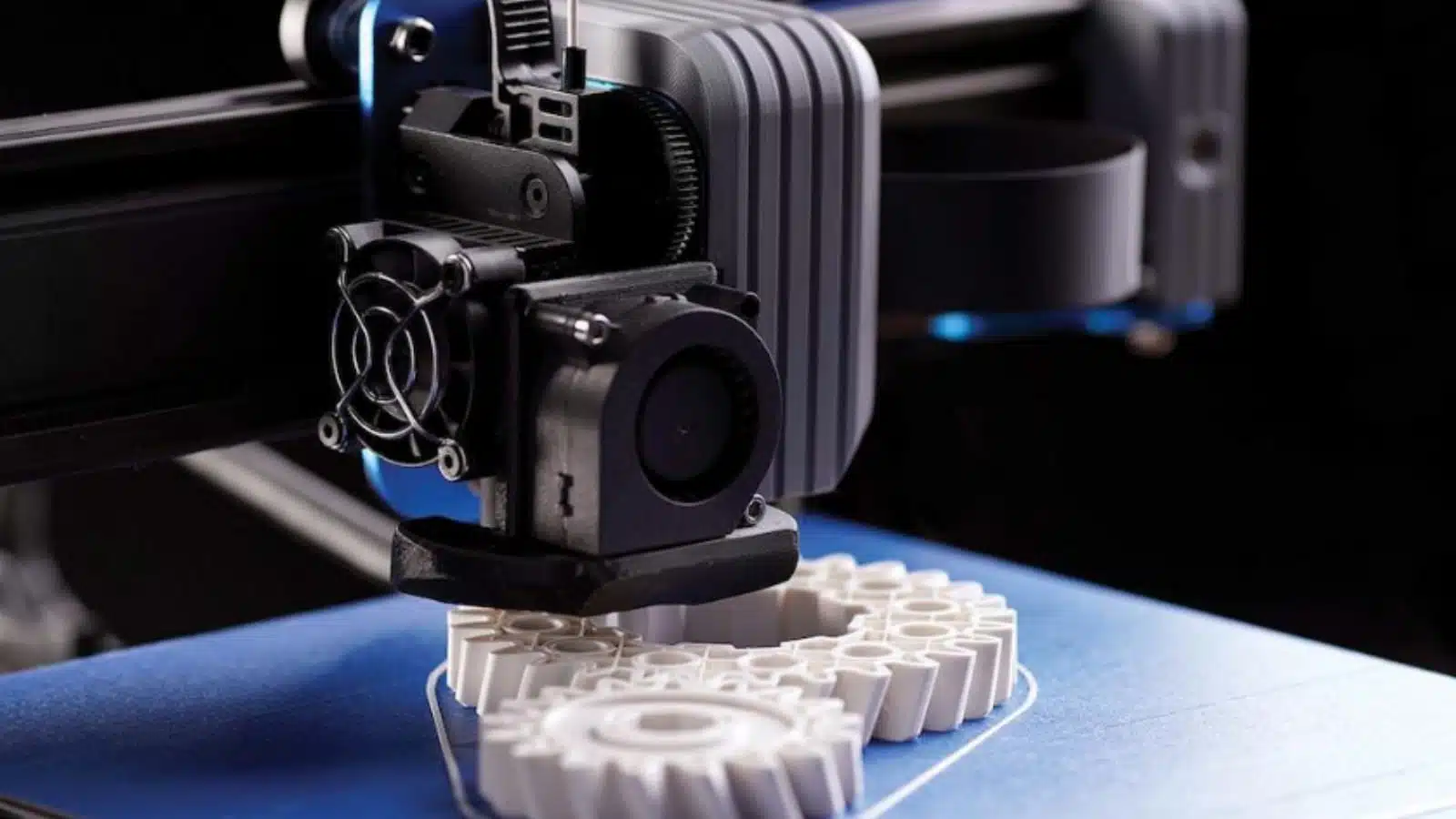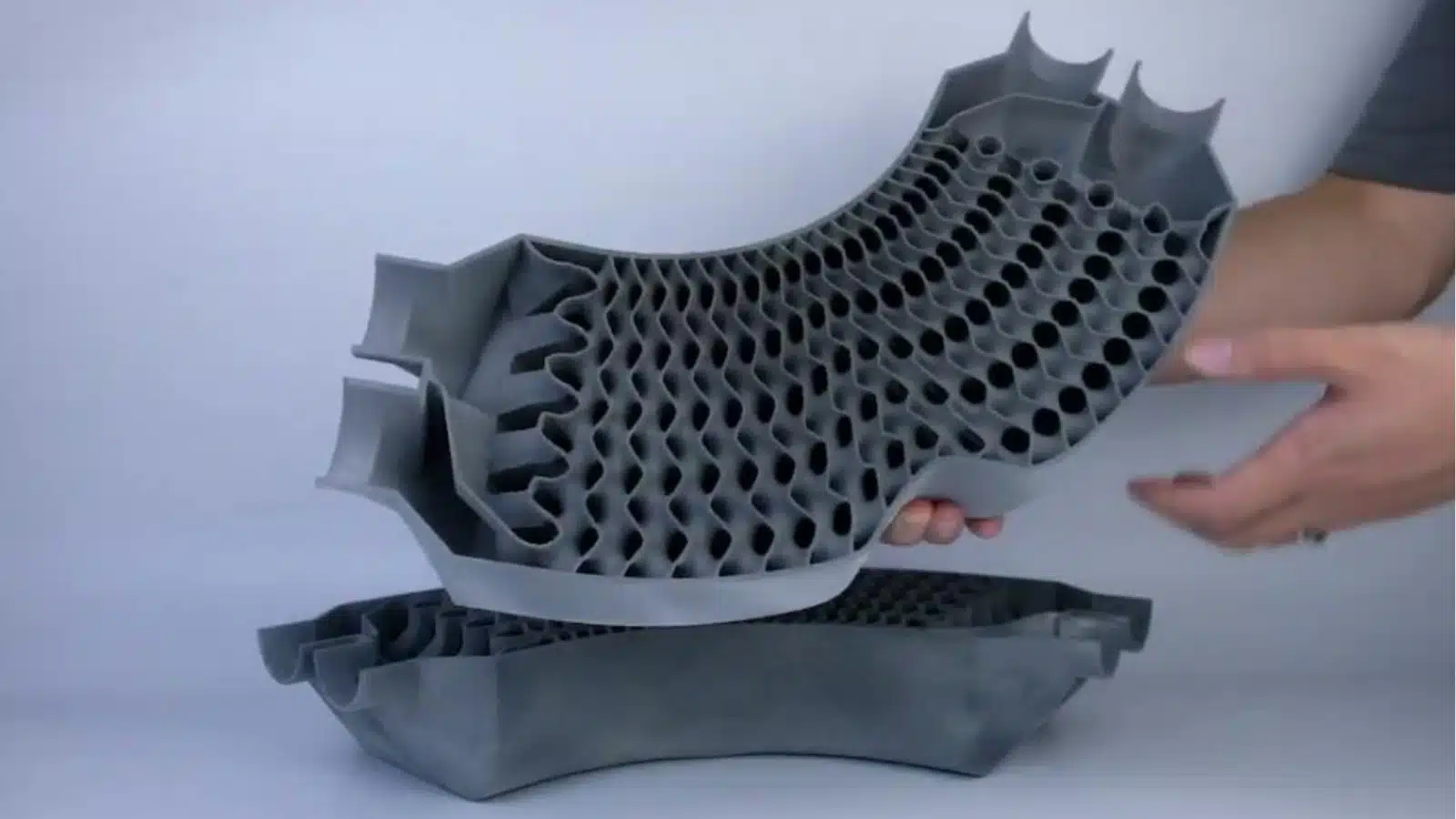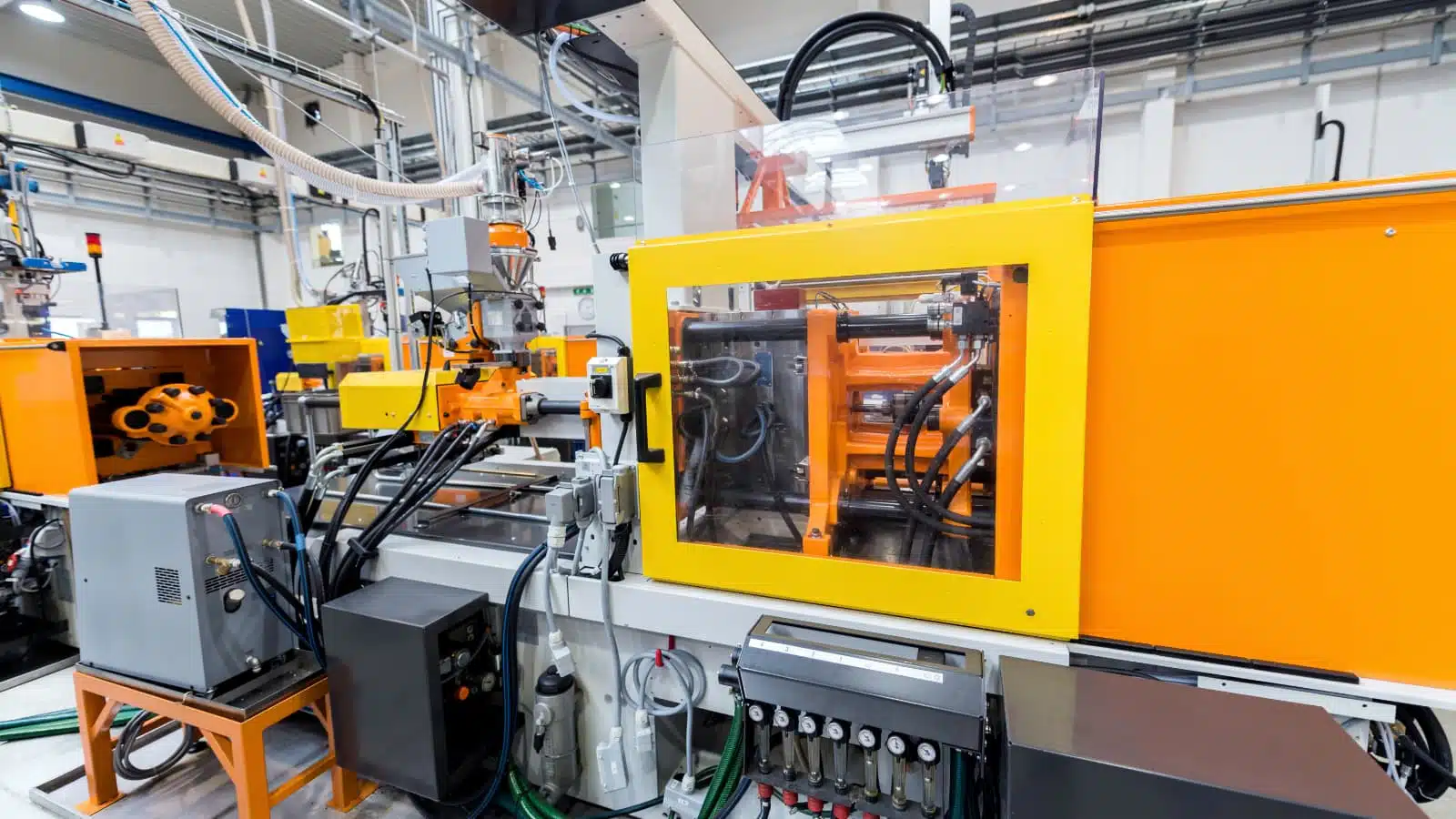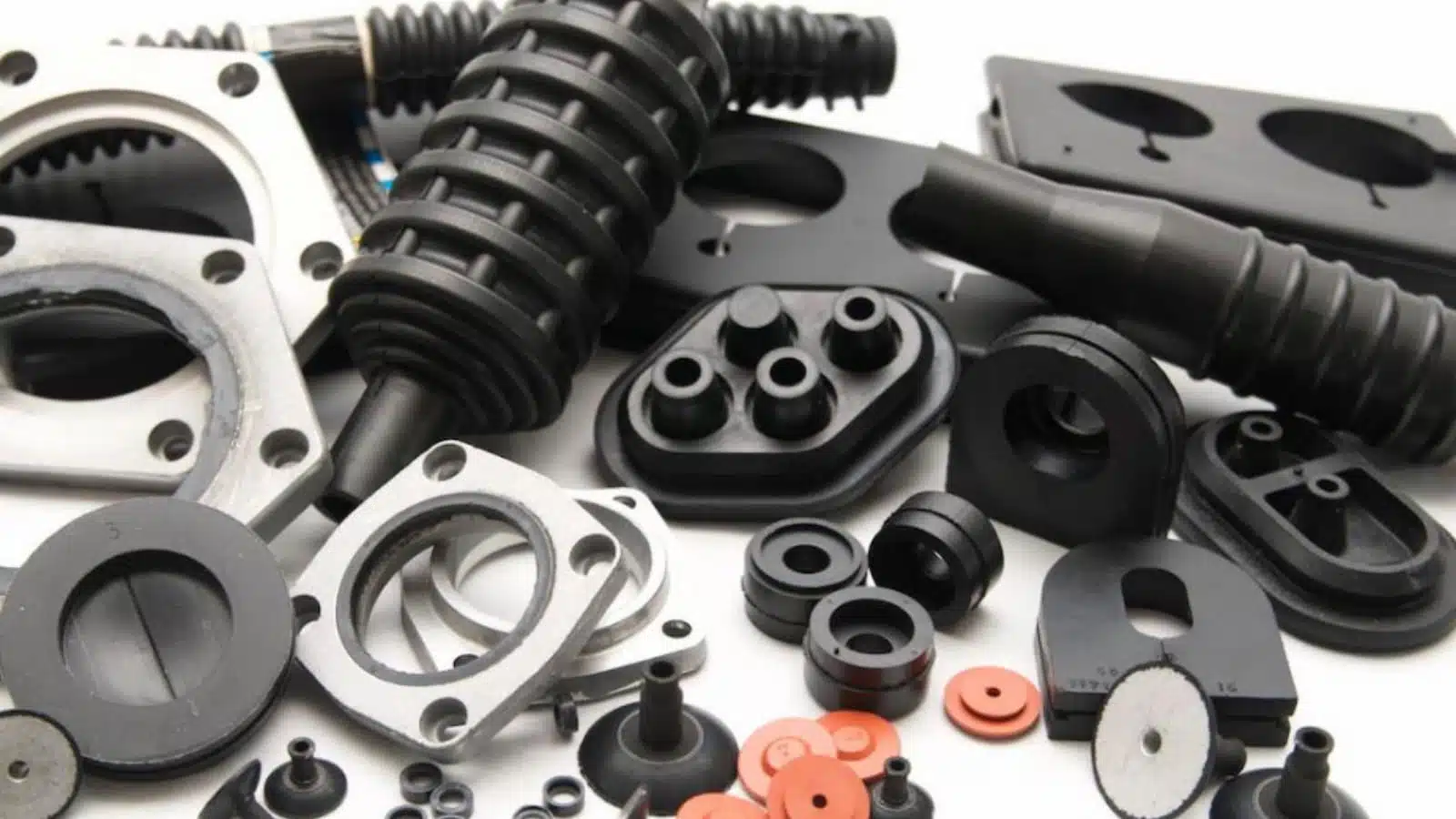Are you familiar with additive and subtractive manufacturing concepts? The Subtractive involves removing materials to achieve the desired shape, whereas additive means building the shape from material layers. Here, 3D printing and compression molding are two additive manufacturing methods. However, there are several fundamental differences between 3D printing vs compression Molding.
The difference is mainly in production speed, efficiency, design flexibility, precision, and applications. Furthermore, we will examine the nuances of these two methods with their comparison in this article.
What Is 3D Printing?
It is an additive manufacturing technology that creates precise and intricate functional parts or products by stacking and fusing successive layers of material. So, a 3D printer does not use a block of material to manipulate the shape. Instead, the nozzle deposits material layer by layer from the bottom up in the print bed according to the slice pattern of the uploaded design.
Meanwhile, slice pattern refers to the individual horizontal layers into which a CAD model is divided. Each slice represents a cross-sectional area of the model that the printer follows to deposit the material layer.

Furthermore, you could need clarification with several 3D printing technologies. They follow the same fundamental principle. However, they have differences in their working mechanism, material compatibility, and printing capabilities. Here are the common types of 3D printing technologies.
| Type | Materials | Description/Working | Pros | Cons |
| FDM (Fused Deposition Modeling) | Thermoplastics (ABS, PLA, Nylon) | It melts and extrudes the material filament layer by layer to achieve the final shape. | Structural stability, low cost, various materials | Rougher finish and moderate precision |
| SLA (Stereolithography) | Photopolymer Resin | SLA employs an ultraviolet laser to cure photopolymer resin in a tank, creating layers. | High precision, smooth finishes, and creates detailed models and prototypes. | Limited material choice |
| SLS (Selective Laser Sintering) | Polymer Powder(Nylon PA 12, glass-filled Nylon | A laser beam sinters material powder in a chamber, often with inert gas to prevent oxidation. | Complex geometries possible | Longer lead times and rough surface texture |
| DMLS (Direct Metal Laser Sintering) | Metal Powder (various alloys, aluminum, copper, nickel ) | DMLA fuses metal powder particles layer by layer with a laser. | Prints intricate and strong metal parts. | High cost and limited material choices. |
Advantages of 3D Printing
3D printing manufacturing is advantageous for several applications. It provides design flexibility, faster lead times, customization, etc. Here is the elaboration of typical 3D printing advantages;
Design Flexibility and Complexity
If we see the design’s possible intricacies with compression molding and 3D printing, a 3d printer creates highly complex geometries and contours. It also offers more complexity than conventional methods like cnc lathe machining or injection molding. It does not restrict intricate hollow sections, undercuts, and internal lattices as subtractive manufacturing does.

Furthermore, the complex shapes’ capability directly benefits the designers. They can make more innovative and intricate designs to solve manufacturing needs. Additionally, designers do not have to consider draft angles, tool access, thickness uniformity, large assembly, and other restrictions while making 3D printing designs. So, it results in ultimate design flexibility.
Rapid Prototyping
The production speed, good precision, and cost-effectiveness make 3D printing a reliable option for rapid prototyping projects. The time might take from a few minutes to several hours for a part, depending on the complexity and 3D printed materials. Additionally, costs are lower with 3D printing prototyping due to zero upfront tooling cost and an easy design-changing process.
For example, you can quickly prototype and test a new drone design with necessary adjustments on the fly through 3D printing iterations. At the same time, it might take up to months with other methods.
Customization and Personalization
The 3D printing processes involve direct manufacturing from digital files, and they can handle complex designs. As a result, 3D printing allows for custom parts and products according to specific needs. If you have a custom design (3D Model), you can exact it into physical reality with suitable materials and printing equipment.
This customization is extensively beneficial for medical applications. For example, 3D printing can manufacture custom-fit-implants for patients.
Cost-Effectiveness for Small-Batch Production
The main reason behind the low cost of 3D-printed parts in small-batch production is that it does not require expensive manufacturing setups like molds or tooling. Meanwhile, other approaches like injection molding involve heavy upfront investments in molds, which lead to higher per-part cast for small batch or low-volume production.
For example, small-batch production for Nylon parts first demands an aluminum injection mold that costs at least $10, 0 00, while no- such cost for 3D printing.
Limitations of 3D Printing
Although 3D printing has many benefits, it has some limitations, such as material choice, size, precision, and surface finish. Let’s discuss each drawback individually.
Material Limitations
The material choice is smaller for 3D printing than other processes like CNC machining. In fact, it has even fewer options in the context of 3D printing vs compression molding. The 3D printing machines are typically compatible with plastics (ABS, PETG, and TPU), photopolymers, and some thermoset materials & metals (steel, titanium, and aluminum).
However, 3D printing has rapidly expanded its material capabilities beyond basic thermoplastics. More and more materials are becoming compatible due to material science innovations and new 3D printing technologies.
Lower Strength and Durability
As 3D printers convert the design by adding material layers, the final part compromises the mechanical strength. For instance, FDM parts delaminate or underperform under stresses on particular orientations (Z-axis normally). Additionally, parts might lose their original properties like hardness or fatigue strength. For these reasons, the parts also become less durable.
Surface Finish and Precision
The parts from 3D printing leave visible layer marks and occasionally some support material residue. So, it requires post-processing, such as sandblasting, deburring, or even machining. The Ra value for 3D printing parts can be as low as 4 µm (approx.).
Next, it is also less precise than other popular manufacturing technologies. 3D printing typically offers a precision of ±0.2 mm, while CNC can achieve ±0.005 mm and ~±0.025 for compression molded rubber parts.
Size Limitations
3D printing has part size limitations comparing other processes like injection molding or laser cutting. The size capability is restricted by the build volume and bed size (print chamber) of the 3D printer machines. For example, 3d printing can create long wind turbine blades because of size limitations. However, large parts are possible by assembling the small individual 3D-printed fragments.
What’s Compression Molding?
It is a specialized polymer molding process that creates the desired shape by compressing the material in a closed mold. This manufacturing method is popular for thermoset composites with superior properties.

The compression molding process demands a multi-cavity compression mold that exacts the negative geometry of the desired shape. Meanwhile, the mold consists of two halves (fixed lower and movable upper halves). First, a pre-calculated amount of material is placed inside the heated mold cavity, followed by heating and compressing the mold. Here, compression and mold heating forces the material to flow through the cavity and fills it.
However, setting the appropriate pressure, temperature rate, and curing time is essential during the compression. Next, the mold opening reveals the solidified part after cooling.
Advantages of Compression Molding
The following are the well-recognized advantages of compression molding across various manufacturing applications.
High Volume Production Efficiency
Production volume is the most valuable advantage, especially when comparing compression molding and 3D printing. Once you make the mold, you can reuse it to manufacture identical parts in high volumes, up to several thousands of cycles. However, the life of a mold depends on mold material, charge abrasiveness, and other factors.
This high-volume production efficiency reduces the cost-per-part significantly in the long run. On the other hand, there is no per-part-cost reduction with 3D printing mass production.
Excellent Part Strength and Durability
Instead of a layer-by-layer structure, molded parts involve compact and squeezed structural forms. So, compression molding offers excellent part strength. Consequently, there is a low chance of void formation, contributing to the excellent structural integrity of parts.
According to related research, the strength, hardness, tensile strength, and elasticity of compression-molded samples were higher than 3d printed parts during testing.
Good Surface Finish
This molding method molds parts with a good surface finish. This is because the compression conforms material closely to the mold surfaces. Conform closely to the mold surfaces. It can achieve Ra values from as low as 0.1 micrometers (µm) with highly polished molds and optimal processing conditions. Meanwhile, the surface finish of the cavity wall is crucial for the smooth finish of compression molding components.
Suitability for Large Parts
The achievable size of parts with compression molding depends on the mold size. So, you can create the larger parts by designing a suitable mold and using high-compression tonnage. For example, aircraft wing skin is possible with CM.
Subsequently, pre-placing the charge material in the mold, instead of using injection methods, facilitates large-sized molding. The reason is that compression allows the material to be distributed evenly across a large mold cavity without the limitations imposed by the flow and pressure requirements.

Limitations of Compression Molding
Although compression molding offers numerous advantages, it has limitations in design flexibility, tooling cost, production time, and tight precision. Understanding this limitation can help you to avoid possible defects in the final molded parts and make better decisions. Here is the description of each limitation;
Limited Design Complexity
Compression molding is preferable for large and relatively simple designs. Here, limited design flexibility is mainly due to material flow patterns in intricate mold cavities of compression mold. If the designs have complex features like intense slanted angles and small details on corners, the material flow fails to fill those cavities accurately.
Furthermore, material flow limitation might also trap compressed air, causing void formation. On the other hand, designers get extensive freedom with 3d printing.
Higher Tooling Costs
If we look at the tooling cost of 3D printing vs compression molding, mold tooling is significantly high. This is because of the high upfront cost of mold and other auxiliary tooling. Additionally, slight changes in designs require significant investment in mold again. Conversely, 3D printing does not involve such expensive tooling costs.
Longer Cycle Times
The compression molding process generally has a longer cycle, even for compression molding vs injection molding. It involves preheating mold and charge, pre-loading of charge, and relatively longer curing time, all contributing to the higher production time. Subsequently, the flash and burrs removal process from the molded surface after production also adds up the time.
Quality and Precision Issues
Lastly, plastic compression molding struggles to achieve high accuracy and quality like other advanced manufacturing techniques. This is preliminary due to less uniform material flow than other molding methods. Next, other quality issues could be shrinkage and warpage since all thermoset and thermoplastic materials shrink to some extent during cooling.
Regarding precision, the compression molding tolerance typically ranges from ±0.127 to ±0.508 mm. Here, the tolerance varies based on mold cavity surface quality, process parameters, and properties of the charge material.
Differences Between 3D Printing and Compression Molding
After understanding the pros and cons of 3d printing and compression molding, let’s discuss a head-to-head comparison of these processes on different aspects.
Material Selection
Material selection is the foundation for the final properties and functionality of the final part, regardless of manufacturing method. So, having more material options means more chances to get the material that exactly addresses your requirements.
| Material Type | 3D Printing Materials | Compression Molding Materials |
| Thermosetting Plastics | Almost No, In very few specialized scenarios | Epoxy, Phenolic, Polyester, Vinyl ester, Melamine |
| Thermoplastics | ABS, PLA, PETG, TPU, Nylon, PEEK, PC | Polyethylene (PE), Polypropylene (PP), Nylon (Polyamide), Polycarbonate (PC), Acetal (POM) |
| Composite Materials | Carbon Fiber Reinforced PLA, Glass Fiber Reinforced Nylon, Wood-Filled PLA, Metal-Filled PLA, Kevlar-Filled Nylon | Glass Fiber Reinforced Plastic (GFRP), Carbon Fiber Reinforced Plastic (CFRP), Sheet Molding Compound (SMC), Bulk Molding Compound (BMC), Fiber-Reinforced Thermoset |
| Metals | Titanium, Aluminum, Inconel, Copper, Gold, Silver | In very few scenarios |
You can find more material options for 3d printing than compression molding. However, you need to consider cost, your requirements, design specification, and the intended use of final parts while comparing the material compatible with both methods.
Cost Comparison for Different Production Scales
The cost of 3D printing vs compression molding heavily depends on the production volume. The high mold cost in compression molding makes it less expensive as the production volume increases. Meanwhile, 3d printing does not leverage a significant reduction in production cost with large-scale production.
| Production Scale | 3D Printing | Compression Molding |
| Prototyping | Low cost (No molds required) | High cost (Molds required) |
| Small-batch | Moderate cost | High cost due to initial mold investment |
| Medium-Volume | High cost due to slower production speed | Moderate cost (Amortization of mold cost) |
| High Volume | High-cost | Low cost |
Next, the costs increase in compression molding with intricacies as it requires a more complex mold and reduces the cycle time. In contrast, the cost might not increase with complex 3D printing designs. Since material usage has a large share of overall cost, the cost can be decreased if complex parts need less material volume for 3D printing.
Speed and Efficiency in Production
3D printing is a less speedy process than molding, except for the prototyping projects. Compression molding takes much more time in prototyping because of mold-making and tooling arrangements. However, compression molding machines immediately go for the next cycle after cooling the mold. So, compression molding speed is just limited in prototyping and small-batch production.
Subsequently, the efficiency of 3D printing decreases as production volume increases. However, it is highly efficient for producing complex components without additional costs. On the other hand, compression molding excels in scalability. It can manufacture thousands to millions of consistent units at a relatively low cost.
Quality and Durability of Finished Products
First, we will compare the quality of compression molding and 3D printing. The structural quality of molding parts is higher than 3D-printed ones. It is all because of their formation process. The layer-building approach of a 3D printer lowers the structural strength of the part, while pressure during compression molding makes the parts structurally intact. Consequently, the finish quality of the printed surface differs by the printing method. For example, FDM prints display layer lines and need further finishing, and the SLA method produces smoother surfaces. Meanwhile, compression molding provides a consistent and smoother finish.
Furthermore, which ones are the more durable? The answer is compression-molded ones. It is because of material uniformity and the effects of heat and pressure during curing. On the other hand, layered structures introduce vulnerabilities in the 3D printing product.
Design Flexibility
As previously mentioned, 3D printing offers more design flexibility than the compression molding technique. Mold manufacturing is itself a complex process, often machining does not support the designs with intricate internal geometries. Meanwhile, 3D printing does not have any such limitations.
Here is the list of features 3D printing can accommodate, but not by compression molding.
- Complex undercuts
- Deep and small pockets
- Parts with highly variable wall-thickness
- Intricate surface patterns
- Sharp edges, etc.
Suitability for Various Industries and Applications
Since compression molding can mold rubbers and elastomers into strong and durable elastic parts, seals and gaskets are the two most common applications. On the other hand, 3D printing is highly suitable for prototyping and custom manufacturing.
| Industry/Application | 3D Printing Examples | Compression Molding Examples |
| Aerospace | Fuel nozzles for jet engines, brackets for satellite components, drone parts, and various prototyping. | Less popular, celling for aircraft |
| Automotive | Cooling ducts, customized dashboard components, body part prototyping, and interior components | Gaskets and seals, rubber hoses and belts, and vibration-dampening components. |
| Healthcare | Custom surgical models, dental crowns & bridges, custom prosthetic limbs, etc. | Components for durable medical equipment, seals for laboratory containers, silicone masks, and more. |
| Consumer Products | Smartphone cases, custom-fit footwear, toys, and more. | Watch casings, and non-slip grips for tools and sports equipment, airtight food storage containers |
| Electronics | Custom enclosures, various prototyping | Buttons and keypads for remote controls, durable outdoor lighting components, insulating housings for connectors |
How to Make the Right Choice Between Compression Molding and 3D Printing?
There are several considerations for deciding which methods suit your requirements between 3D printing and compression molding. It mainly depends on the production volume, design complexity, part size, and cost. For instance, 3D print manufacturing is suitable for small-size custom parts production in low volume. In contrast, compression molding excels in producing large-size components in higher volume.
However, consulting with industry leaders like RapidDirct is recommended before making the right decision on 3D printing vs compression molding. We are at the front foot of on-demand manufacturing services, including plastic molding and 3D printing services. Our advanced molding and 3D printing manufacturing facilities allow our engineers to handle your unique projects.
- 100+ Material options
- Quick prototyping for diverse industry applications
- Rapid lead time
- Precise yet affordable solutions
Feel free to start your project today!


